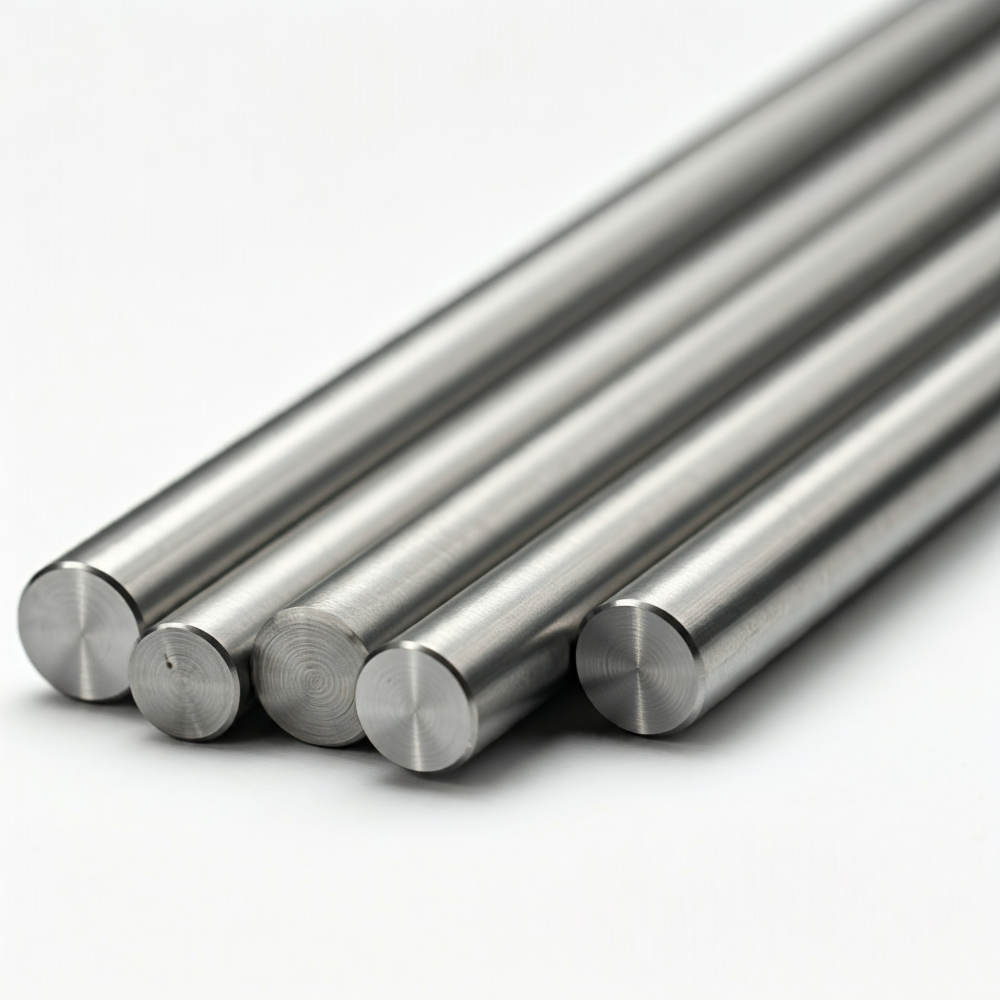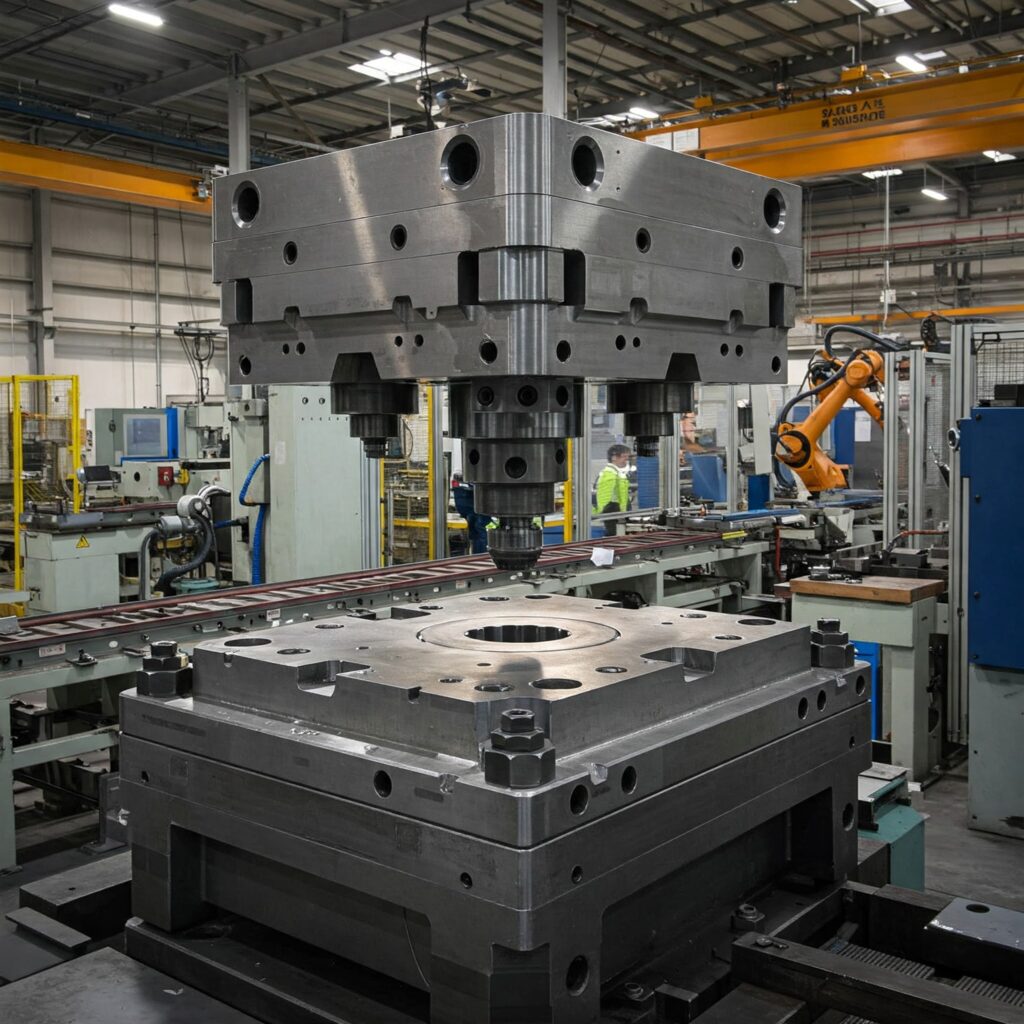Estimated reading time: 9 دقائق
Key Takeaways
- Welding, forming, and heat treatment significantly impact tool steel’s microstructure and properties.
- Forming improves mechanical properties but may cause anisotropy and change ductility; cold work increases strength but reduces elongation.
- Heat treatment modifies material properties, enhancing strength through processes such as quenching, but can also lead to residual stresses and distortion.
- Thermomechanical treatment (TMT) combines heat treatment and forming to achieve superior properties beyond those of either method alone.
Table of contents
Welding, forming, and heat treatment exert profound and interrelated effects on the microstructure, mechanical properties, and overall performance of tool steel during manufacturing. These processes determine the strength, hardness, toughness, ductility, and corrosion resistance of tool steel, while also influencing the presence of detrimental factors such as residual stresses and deformation.
Whether tool steel can achieve the desired properties depends on the complex interplay between material composition, manufacturing processes, and usage conditions.
1. Effects of Welding on Material Performance
Welding is a consolidation process that joins smaller pieces together. Subject tool steel to rapid thermal cycling to induce localized changes in its microstructure and mechanical properties, forming a heat-affected zone (HAZ) and solidified weld metal (WM)1.
1.1 Thermal Cycles and Heat Input
To achieve high-quality welds, the following factors must be considered.
- Microstructural Alterations
During welding, not only does the weld itself melt, but the surrounding area is also affected by high temperatures. This zone is called the heat-affected zone (HAZ). The cooling rate of this area is critical. For heat-treatable steels such as فولاذ الأدوات H13, if cooled too rapidly, the metal structure in this area transforms into a highly hard yet extremely brittle phase known as “martensite.” This results in welded joints that are highly susceptible to cracking.
- Heat Input Control
The heat input during welding is determined by the voltage, current, and welding speed.
Excessive heat input will result in reduced weld strength and toughness. It will also cause grain growth in the previously mentioned heat-affected zone (HAZ), making it more brittle.
Low heat input prevents grain growth in tool steel, enhancing both strength and ductility while achieving more desirable hardness in the weld zone.
Welding heat input should not be maximized indiscriminately; it must be precisely controlled.
- Weld Metal Composition and Quality
The chemical composition and internal microstructure of the weld metal itself also determine the final quality.
If oxygen is introduced during welding, it will form oxide inclusions within the weld. You can think of these inclusions as “sand” or “tiny holes” within the metal, which severely reduce the weld’s strength, toughness, and ductility.
The shielding gas used during welding (such as argon) serves to isolate the oxygen in the air. However, if the shielding gas itself is impure or provides inadequate protection, oxygen can infiltrate, resulting in poor weld quality.
During rapid solidification, welds form dendritic crystal structures and segregation patterns that impede plastic flow during tensile testing, typically resulting in a higher ratio of yield strength to tensile strength in the weld metal compared to the base metal.
1.2 Effects on Specific Material States
Welding produces different effects on different types of metals. This is because certain metals undergo processes during production that enhance their properties, while the heat generated during welding can degrade those properties.
- Cold-Worked/Strain-Hardened Alloys
Welding heat may wholly or partially counteract the strain hardening effect within the heat-affected zone (HAZ), leading to recrystallization and annealing. This results in the strength and hardness in this region being lower than that of the base metal.
- Precipitation-Hardened Alloys
Many high-strength steels, martensitic stainless steels, and aluminum alloys gain strength during production through special heat treatments that cause the precipitation of tiny hard particles (precipitation phases) within their structures. The heat generated during welding can destroy these internal hard particles. The heat from welding causes these hard particles to expand, thereby losing their strengthening effect. In extreme cases, excessive heat can even melt these hard particles back into the metal, causing them to disappear entirely.
- Duplex Stainless Steels (DSS)
Its internal structure consists of 50% austenite + 50% ferrite, combining high strength with exceptional corrosion resistance. The heat from welding and subsequent cooling can disrupt this ratio and potentially cause the precipitation of harmful phases (such as sigma phase, chromium carbides/nitrides) in the heat-affected zone and weld metal. These phases cause a significant reduction in the steel’s toughness, particularly fracture toughness.
1.3 Residual Stress and Finishing
Welding operations generate residual stresses. These stresses make welded joints more susceptible to fracture under impact loads. They also increase the susceptibility of the workpiece to rust and fatigue failure.
2. Effects of Forming on Material Performance
Forming is defined as manufacturing through the plastic modification of a shape while retaining mass and material cohesion. Formability or workability refers to the material’s capability to deform without failure.
2.1 Mechanical Properties Modification
- Cold Forming (Cold Working)
Cold drawing and cold rolling induce strain hardening in metals, significantly increasing the material’s strength (yield strength and tensile strength) and hardness. For example, in low-carbon and medium-carbon steels, yield strength can be increased by 100% to 300%, while hardness can be increased by 60% to 150%.
However, the material’s ductility, elongation, and notched impact toughness will simultaneously decrease. Cold working simultaneously generates highly localized residual stresses and may induce anisotropy, meaning the material’s properties become different in different directions.
- Hot Forming (Hot Working)
Hot forging and hot rolling improve the workability of metals, enhancing their ductility without causing embrittlement as seen in cold working processes. The drawback is that its yield strength is lower than that of cold-worked metals. During hot processing, the faster the processing speed (the greater the strain rate), the higher the yield strength of the material.
- Wrought Structure and Grain Flow
During hot forging, the grains and impurities within the metal are flattened and aligned along the direction of deformation, forming flow lines or “fibrous structure.” The purpose is to achieve an ideal forged structure. Along the flow lines, the material exhibits enhanced strength and toughness. Perpendicular to the flow lines, the material’s properties become weaker.
- Enhanced Performance
When workpieces require high strength, high reliability, impact resistance, and fatigue resistance, certain specialized processing methods are employed. For instance, a surface treatment technique called deep rolling can induce beneficial compressive residual stresses on the part surface. This significantly enhances the part’s fatigue life, making it more durable under cyclic loading and less prone to fracture.
2.2 Formability and Microstructural Dependence
Formability depends on material variables (composition, microstructure, voids, inclusions) and deformation conditions (temperature, strain rate, stresses, strain history).
- Anisotropy and Texture
When you perform forming processes on metals, such as rolling or drawing, the grains within the material align in a fixed direction rather than remaining randomly oriented. This phenomenon is called texture. Once the grains align in a fixed direction, the material exhibits anisotropy in its properties.
The properties of a material along the direction of grain alignment differ from those perpendicular to it. This texture induces texture hardening, moderately increasing the yield strength and tensile strength of the material in the processing direction.
- TRIP Effect in Steels
TRIP stands for Transcription-Regulated Induced Plasticity. TRIP enables steel to simultaneously gain strength and formability during processing. Typically, strength and formability are mutually exclusive—for instance, in cold working, increased strength leads to reduced ductility.
When certain austenitic stainless steels are processed at room temperature, such as during stamping, the applied pressure triggers a phase transformation within their internal structure. The unstable austenite structure automatically transforms into the extremely hard martensite structure. This transformation significantly increases the material’s work-hardening rate. The steel’s strength and formability (ductility) can be enhanced simultaneously.
- Forming Temperature and Strain Rate
Forming materials typically exhibit low yield strength and high ductility, properties significantly influenced by temperature. Material performance is highly dependent on both temperature and processing speed. Especially at elevated temperatures, such as during hot forging, the rate of processing is extremely sensitive to the material’s final properties and performance.
3. Effects of Heat Treatment on Material Performance
Heat treatment refers to the controlled heating and cooling of metals in their solid state to purposefully alter their structure and thereby modify their properties.
3.1 Objectives and Property Enhancement
- Strengthening and Hardening
Quenching and tempering, hardening, and precipitation hardening (also known as aging) aim to enhance a material’s strength, hardness, toughness, and wear resistance. The underlying principle involves transforming the internal structure of the metal into martensite. Once this transformation occurs, the material’s properties undergo significant changes.
- Ductility and Softening
Annealing or normalizing aims to soften the material and improve machinability. Sometimes metals become hard and brittle after cold working; annealing can soften them again and restore ductility.
- Fatigue Performance
The effect of heat treatment on fatigue properties is significant. For instance, austempering can completely transform the microstructure of steel into bainite. This process is commonly used for high-carbon bearing steels. This specialized heat treatment creates beneficial residual stresses in the subsurface of components. These stresses greatly enhance the fatigue life of parts, making them more durable under long-term cyclic loading.
3.2 Microstructure Control and Stability
Heat treatment controls the microstructure, including phase composition, grain size, and precipitation kinetics, which dictate final performance.
- Phase Control
The combination of heating, holding time, and cooling rate can produce specific microstructures, such as martensite, bainite, and ferrite. For instance, to enhance the wear resistance of gray iron, it undergoes hardening. This process yields a composite structure where graphite particles are embedded within a martensitic matrix.
- الأوستينيت المحتفظ به
During the quenching of high-carbon steels, such as فولاذ الأدوات D2 و فولاذ الأدوات D3, a small portion of the austenite that should have fully transformed into martensite “remains untransformed.” This is called “retained austenite.” Residual austenite is soft. It reduces the steel’s surface hardness, thereby significantly compromising its rolling-contact fatigue performance. Residual austenite can be reduced through heat treatment.
For example, in bearing steel, excessive residual austenite makes bearings highly susceptible to fatigue failure.
- Precipitation/Aging
Proper heat treatment can accelerate the aging process, promoting the precipitation of desired strengthening phases within the material to achieve precipitation hardening. Improper heat treatment precipitates detrimental phases such as carbides, nitrides, and σ phase. These detrimental phases severely compromise the material’s mechanical properties, impact toughness, and corrosion resistance.
3.3 Stress and Distortion
Heat treatment is vital for managing internal stresses, but the process itself can cause distortions.
Annealing, normalizing, and stress-relieving heat treatments can eliminate strain and internal stresses caused by processes such as cold working, drawing, bending, or welding. However, quenching during heat treatment generates new stresses within the workpiece, ultimately causing it to deform, warp, or even crack.
4. Combined Effects: Thermomechanical Treatment of Steel
Thermomechanical Treatment of Steel(TMT)2 processes combine controlled thermal treatments and plastic deformation (forming) to synergistically enhance properties beyond what either method alone can achieve. It no longer involves processing the metal first, then heat treating it, or heat treating it first and then processing it. Instead, it combines plastic deformation and heat treatment within a single process. The resulting metal properties achieved through this method cannot be attained by using either “processing” or “heat treatment” techniques alone.
For example, the most common processes for high-strength low-alloy steel (HSLA steel) are controlled rolling and direct quenching. Precise temperature-controlled rolling is performed on the rolling mill, followed by immediate heat treatment without cooling. This significantly refines the microstructures, enhancing both its strength and ductility.
- Vladimir B. Ginzburg, Metallurgical Design of Flat Rolled Steels, p. 141. ↩︎
- Ginzburg, V. B. (2005). Metallurgical Design of Flat Rolled Steels. Marcel Dekker, Inc., p. 420. ↩︎


